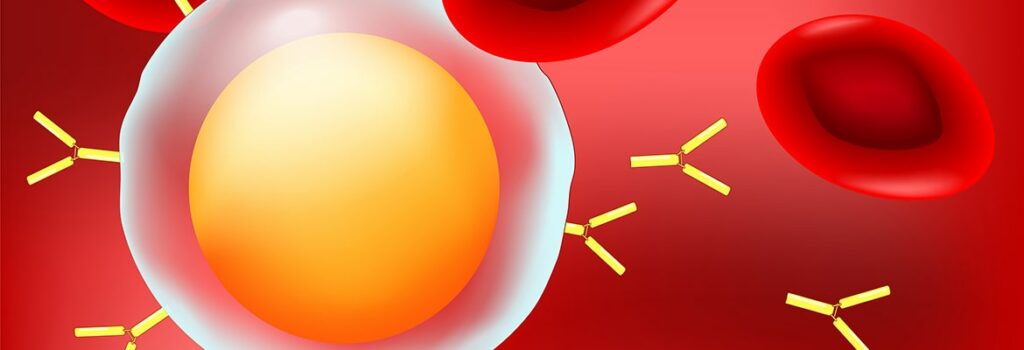Dual B-cell suppression with ianalumab shows potential for primary Sjögren’s syndrome
By Claire Barnard, medwireNews Reporter
Suppression of B cells through two different mechanisms of action may warrant further investigation as a treatment strategy for primary Sjögren’s syndrome, suggests a phase 2b dose-finding study of the new biologic ianalumab.
Writing in The Lancet, Simon Bowman (University Hospitals Birmingham NHS Foundation Trust, UK) and co-investigators say “[i]t has long been evident that B cells have a role in the development and maintenance of Sjögren’s syndrome, but clinical trials of monoclonal antibodies directed against B-cell targets did not show convincing efficacy.” They suggest that this could be due to trial design or insufficient B-cell suppression with drugs such as rituximab and belimumab.
Bowman and team explain that ianalumab provides “a different approach towards targeting B cells”, with two modes of action, namely “direct lysis of B cells by antibody-dependent cellular cytotoxicity, and BAFF [B-cell activating factor] receptor blockade that interrupts BAFF-mediated signalling for B-cell maturation, proliferation, and survival”.
For the trial, 190 adult patients with primary Sjögren’s syndrome with moderate-to-severe disease activity and symptom severity were randomly assigned to receive subcutaneous injections of ianalumab at one of three doses (5 mg, 50 mg or 300 mg every 4 weeks) or placebo. Participants in the four groups had an average age of 48–52 years, 87–98% were women, and the average baseline EULAR Sjögren’s Syndrome Disease Activity Index (ESSDAI) score was 13.0–14.2 points.
“Experience of earlier rituximab trials informed the design of this study”, and “[t]he aim was to include participants whose disease damage was not too severe to be reversed”, say the investigators. They note that the trial excluded patients with Sjögren’s syndrome associated with other autoimmune diseases, as well as those with serious diseases or infections, recent malignancy or change in background treatment, or prior biologic exposure.
During the 24-week treatment period, participants treated with ianalumab experienced dose-dependent reductions in disease activity. The least squares (LS) mean reductions in ESSDAI score from baseline to week 24 in the ianalumab 5 mg, 50 mg and 300 mg groups were approximately 5.5, 7.0 and 8.0 points, respectively, compared with 6.0 points for the placebo group.
These findings translated into a significant 1.92-point greater LS mean reduction in ESSDAI score with ianalumab 300 mg versus placebo, say the investigators. They note that participants given the highest dose of ianalumab also had significant improvements in Physician’s Global Assessment score and stimulated salivary flow compared with those given placebo.
Overall rates of adverse events (AEs) in the ianalumab 5 mg, 50 mg, 300 mg and placebo groups were 85%, 83%, 94% and 84%, respectively, and the corresponding rates of serious AEs were 0%, 2%, 4% and 8%. Four serious AEs considered to be treatment-related occurred in three patients, including one case each of pneumonia and gastroenteritis in the placebo arm, and appendicitis plus tubo-ovarian abscess in one patient given ianalumab 50 mg.
“To our knowledge, this is the first large, randomised, controlled trial in primary Sjögren’s syndrome that met its primary endpoint, and its results mean there is potential for more studies of this mechanism in the future”, conclude the researchers.
News stories are provided by medwireNews, which is an independent medical news service provided by Springer Healthcare Ltd. © 2022 Springer Healthcare Ltd, part of the Springer Nature Group
Lancet 2021; doi:10.1016/S0140-6736(21)02251-0

